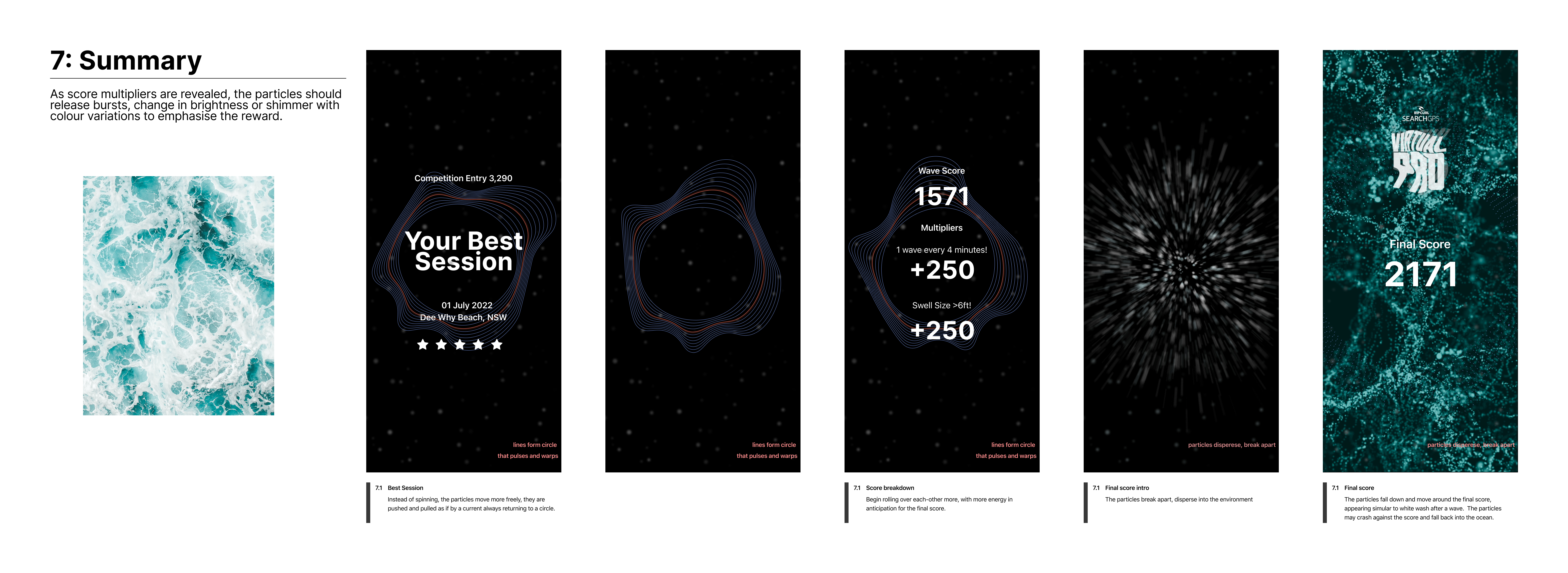Ripcurl Virtual Pro
Ripcurl Virtual Pro was a data visualisation to accompany a global, virtual surf competition. I was tasked with designing and implementing a data visualisation using user data from Ripcurl surf-tracking smart watches.
Project Requirements
The project involved gathering raw surf data from 1,600 surfers, parsing and extracting interesting data points from the data, pre-rendering a personalised, engaging, and sharable video from these datapoints, pre-rendering these videos and uploading them to the cloud to be accessible, building a microsite to present the information, and notifying users via email when the promotion ended.
I was tasked with parsing and extracting the data, the design and implementation of the personalised videos, managing the rendering and storage of these videos and providing all of my work in a way that could be used to email the entrants.
Implementation
I chose to implement the project using web tech, primarily Three.js, React, and React Three Fiber. While this was a great choice for real-time rendering and quick iterations, it did pose an issue when it came time to render, which I’ll cover later.
After parsing the data, extracting points of interest and providing it to the client to choose their most interesting data points I began concept generation for the visualisations.

The particle movement and lifetimes were built using my own WebGL compute shader that acted like a rolling buffer over the same n-sized texture. With this approach I was able to get a smooth 60fps with around 6 million particles and highly customisable visuals through by modifying the uniform values. The video had to be 90 seconds long and display each visualisation at a fixed time so I also built a fairly simple framework for the config, play back, and debugging of the timeline.
Issues Faced
While the Web-tech approach worked great for developing and iterating on the visuals, when it came time to export to videos it
became more a burden. I ran into issues getting the image data from the canvas into memory at a viable framerate. We had three options,
use toDataUrl and receive every frame as base64 encoded string, use toBlob and have to deal with async rendering or a third solution
using the electron api. After testing I found that toDataUrl and toBlob had comparable performance and decided to continue with the
toDataUrl approach.
Later on in the optimisation stage, I had the idea of using electron’s ability to screenshot itself and a message bus to manage frame syncronising which would have yielded higher performance. However, under time constraints we had to opt for the quicker solution, to simply run N instances of the app at once. I built a manager process that would provision renderers, re-encode image sequences (and provide good video size/quality tradeoffs) and upload the data to S3 to be sourced via a microsite.
It’s a tough call whether a different technology would have been a better choice. On one hand I would have had access to a lot more power and optimisation potential but on the other hand it would have been a big risk to undertake a new technology on an agency job with a set release date. After investing my own time into it for personal projects, If I were to rebuild it now I would have used Bevy and Rust for the particle simulation and rendering. That would have given me native performance, highly customisable particle behaviour via its ECS and the ability to interface directly with libffmpeg for encoding.